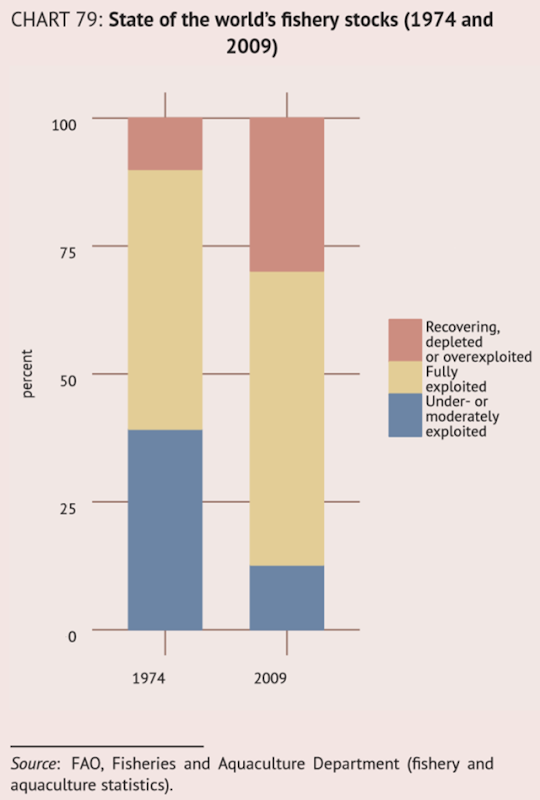Graph of the Day: State of the world’s fishery stocks, 1974 and 2009
(FAO) – Major marine stocks are shrinking rapidly. The proportion of stocks estimated to be under- or moderately exploited declined from 40 percent in the mid-1970s to 12 percent in 2009. In contrast, the proportion of overexploited, depleted or recovering stocks increased from 10 percent in 1974 to 30 percent in 2009. The proportion of fully exploited stocks has remained relatively stable at about 50 to 60 percent since the 1970s. As a whole, these figures indicate that global marine capture production is unlikely to increase, unless effective management plans are put in place to rebuild overfished stocks. While there is a degree of uncertainty about these estimates, the apparent increasing trend in the percentage of overexploited, depleted and recovering stocks and the de- creasing trend in underexploited and moderately exploited stocks give cause for concern. At the same time, however, there are encouraging signs of steady progress in restoring overfished stocks and marine ecosystems through effective management in some areas. Inland fisheries are vital for livelihoods in many parts of the world and also for diets, because they provide high-quality protein, essential nutrients and minerals that are often difficult to obtain from other food sources. In recent years, in- land water fishery production has expanded to over 10 million tonnes, accounting for more than 10 percent of global capture production. However, the state of inland fishery re- sources and the ecosystems that support them is not generally well known, and the reliability of data on inland water catches reported by several countries remains questionable. There is a growing appreciation of the need to improve in- land fishery statistics.
